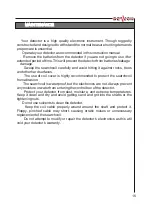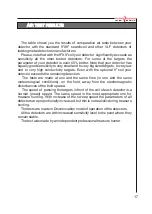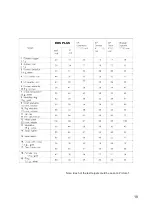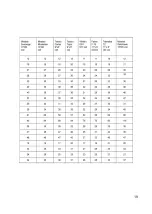
CONTROLS
11
Figure 8
The
sens
control is often thought of as a depth control and it is, but it can
also be used to make the detector more stable if interference caused by
ground mineralization or electrical fields are experienced. The
sens
control
works in conjunction with the adjustments of the
high/low
switch. The
low
position of that switch is for maximum stable operation, while the
high
position
is for maximum sensitivity and detection depth.
For mass searching we recommend to use the
low
position of the switch. The beginners could use it and
increase the sensitivity level to the boundary where the
detector remains quiet and stable. For the very experienced
TH-ers we would recommend the position
high
of the switch.
For maximum depth and sensitivity the professionals should
then rotate
sens
control clockwise until they hear rare,
interrupted tones from the speaker. When they start sweeping
the coil these tones will be oppressed by the ground, and the
operator will hear only the useful responses from targets in the ground.
Of course, all this is valid if the detector is operated in its Discrimination Mode.
The switching to
high
should be made if the ground and atmosphere
interferences are normal. If the grounds are heavily mineralized, or if there are
too many electromagnetic disturbances, the
low
position of the same switch
should be used.
When testing the detector in built-up places, where there are many
electromagnetic interferences, you won’t be able to increase too much the
sensitivity level. That is why for the tests of the real parameters and qualities of
the detector we would recommend the field testing. If the detector is slightly
noisy, before decreasing the
sens.
level try with a change of the operation
frequency (from
freq.1
to
freq.2
or vice versa) and check whether the detector
has become less noisy.
The normal position of the
freq.1/freq.2
switch is the
freq.1
,
and it is for 13.89 kHz operating frequency. If there are
interferences received you could choose the frequency, where
the detector is less noisy. The frequency switch positions are
designed to eliminate the radio-frequency interferences mainly
in competition hunting or when searching in close proximity to
another detector with a similar operating frequency. If there is
an other detector with the same frequency, to operate both
detectors normally they should be operated on different frequencies.
Figure 9
Summary of Contents for EDS plus II
Page 1: ...II ...
Page 19: ...Note Each of the test targets could be seen on Picture 1 18 EDS PLUS ...
Page 20: ...19 ...
Page 21: ...1 2 3 4 5 6 7 8 9 10 17 19 13 16 18 15 11 14 picture 1 20 ...
Page 22: ......







































